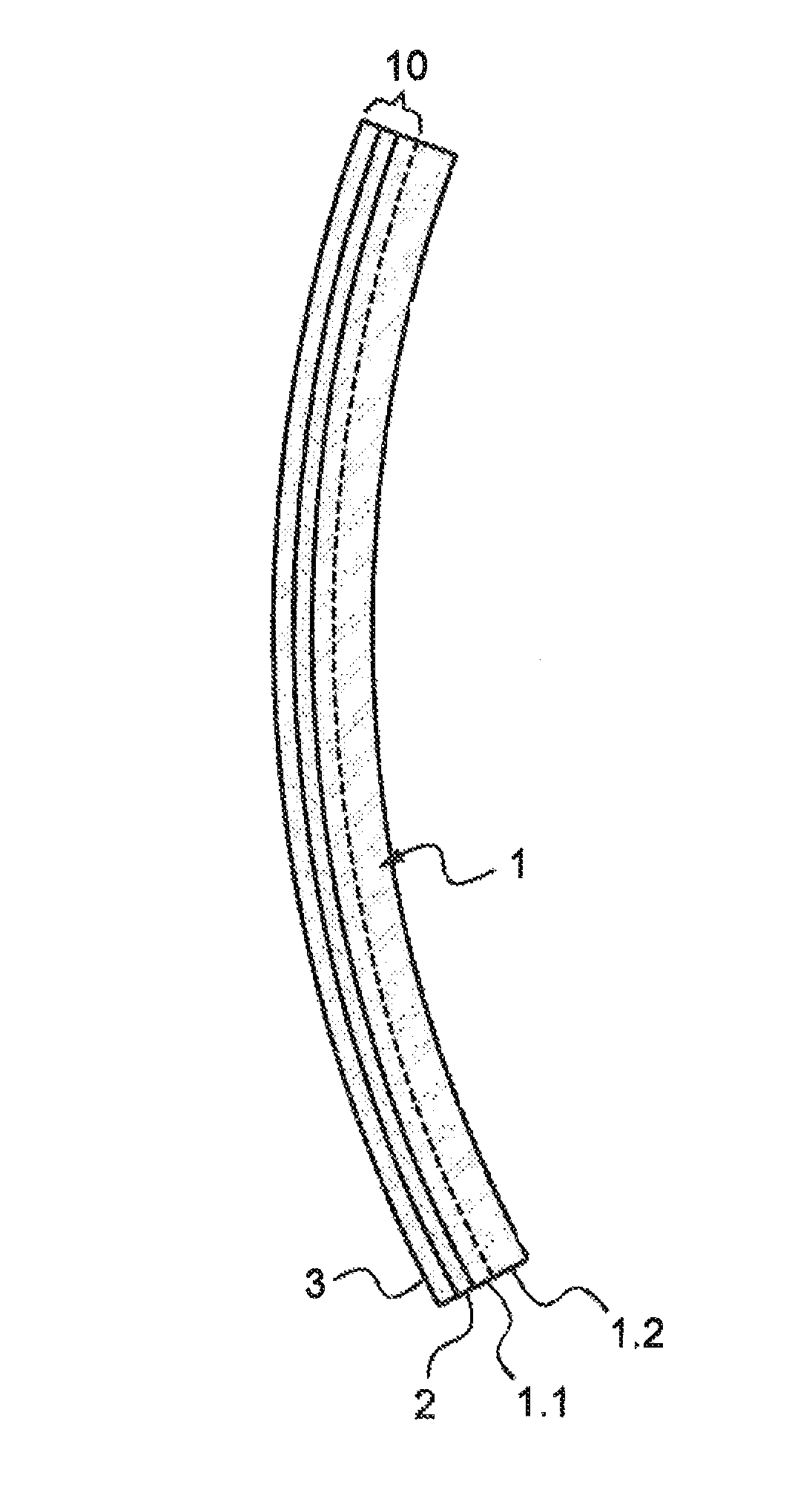Method for producing a polarising lens and corresponding polarising lens
a technology of polarizing lenses and polarizing lenses, applied in the field of making polarizing lenses and corresponding polarizing lenses, can solve problems such as impede vision
- Summary
- Abstract
- Description
- Claims
- Application Information
AI Technical Summary
Benefits of technology
Problems solved by technology
Method used
Image
Examples
Embodiment Construction
[0020]The invention relates to a polarizing lens that may be correcting or non-correcting, and that comprises in succession: a mechanical support layer 1 made of polycarbonate (PC); an intermediate layer 2 made of polyvinyl alcohol (PVA); and an outer layer 3 made of cellulose triacetate (CTA). The adhesive layers that might be necessary for maintaining cohesion between the layers are not mentioned. The invention preferably relates to a non-correcting polarizing lens.
[0021]The mechanical support layer 1 forms the rear face of the lens and is arranged to give the lens its mechanical properties, and in particular its stiffness.
[0022]The thickness of the mechanical support layer is thus defined as a function of the looked-for stiffness and mechanical strength. It is also defined in accordance with the optical properties of the lens.
[0023]The outer layer 3 forms the front face of the lens.
[0024]The rear face and the front face of the lens may optionally be covered in any coating that is...
PUM
| Property | Measurement | Unit |
|---|---|---|
| temperatures | aaaaa | aaaaa |
| shape | aaaaa | aaaaa |
| pressure | aaaaa | aaaaa |
Abstract
Description
Claims
Application Information
 Login to View More
Login to View More - R&D
- Intellectual Property
- Life Sciences
- Materials
- Tech Scout
- Unparalleled Data Quality
- Higher Quality Content
- 60% Fewer Hallucinations
Browse by: Latest US Patents, China's latest patents, Technical Efficacy Thesaurus, Application Domain, Technology Topic, Popular Technical Reports.
© 2025 PatSnap. All rights reserved.Legal|Privacy policy|Modern Slavery Act Transparency Statement|Sitemap|About US| Contact US: help@patsnap.com


